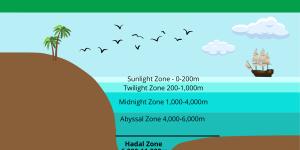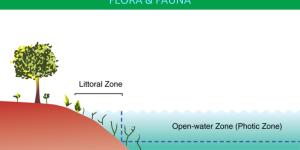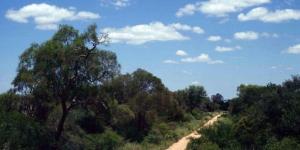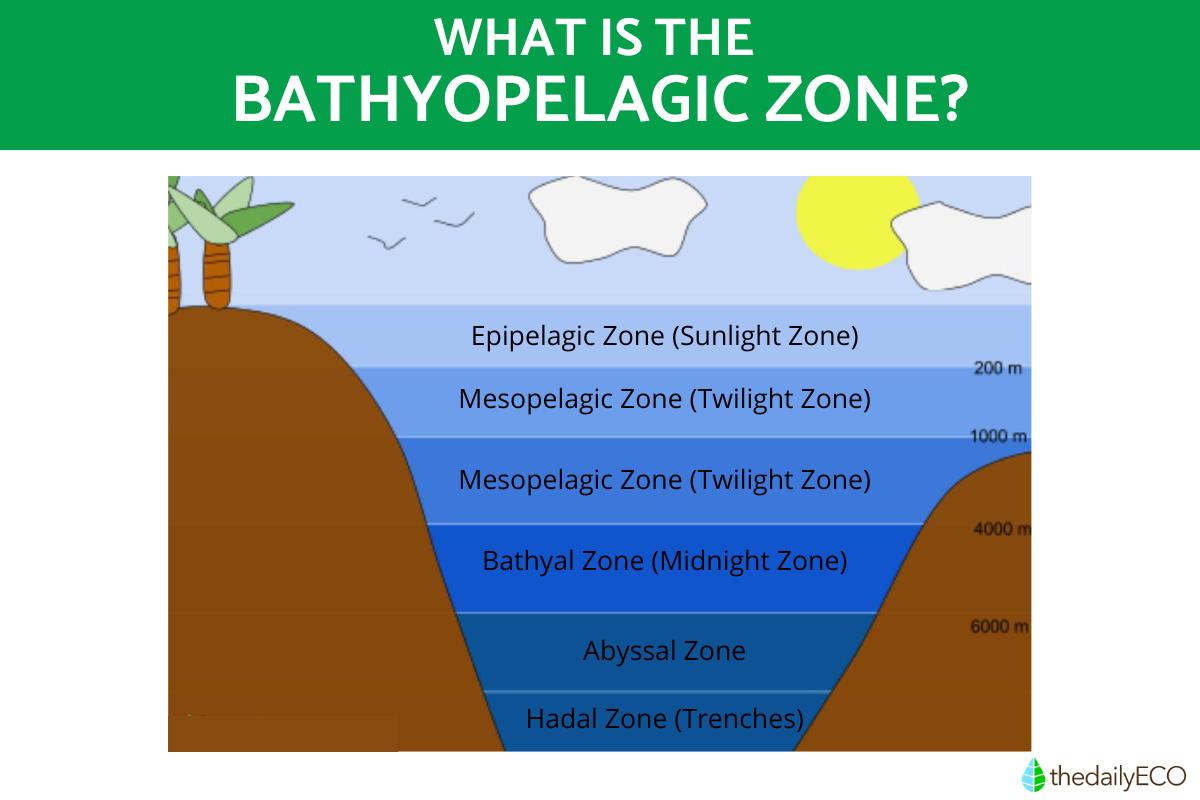What Is the Bathypelagic (Bathyal) Zone?

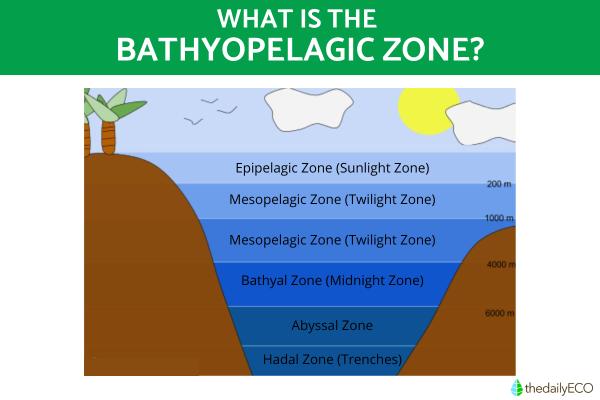
Our planet's oceans hold a hidden world, a vast realm shrouded in perpetual darkness. This region, known as the bathypelagic zone, plunges from 1,000 to 4,000 meters below the surface. Sunlight never reaches these depths, yet the bathypelagic zone teems with life. Extraordinary creatures, adapted to the crushing pressure and frigid temperatures, call this mysterious environment home.
In this article, we'll explore what the bathypelagic zone is, the unique challenges faced by life in the deep sea, and the fascinating adaptations that allow organisms to thrive in this alien world.
What is the bathyopelagic zone?
The bathyal zone plunges from roughly 1,000 meters (3,280 feet) to 4,000 meters (13,123 feet) below the ocean's surface. It lies between the mesopelagic zone, which is shallower, and the abyssopelagic zone, which is deeper.
This realm is defined by a crushing embrace of hydrostatic pressure due to its immense depth. Temperatures remain consistently cold, typically around 4°C, and dip further as you descend. Sunlight cannot penetrate this far, leaving the bathyal zone in a state of perpetual darkness.
Because there is no sunlight for photosynthesis, the animals in the bathyal zone have adapted to survive in the darkness. Many of them have bioluminescence, which is the ability to produce their own light. Creatures employ this internal light production for various purposes. Some, like the anglerfish (Himantolophus spp.) and viperfish (Chauliodus spp.), use it to lure unsuspecting prey closer. Others, such as the dragonfish (Stomias boa boa), utilize it for communication, either with potential mates or members of their species. Others have very large eyes or no eyes at all. They also tend to be very slow-moving and have low metabolisms in order to conserve energy.
In specific regions of the Pacific and Atlantic Oceans, the bathyal zone hosts remarkable hydrothermal vents. These are essentially underwater hot springs found on the ocean floor, particularly near areas with volcanic activity. They function like chimneys, spewing out superheated, mineral-rich water.
These vents spew forth mineral-rich, superheated fluids, creating unique ecosystems fueled by chemosynthesis. Here, chemosynthetic bacteria, unlike surface-dwelling organisms, don't rely on sunlight for energy. Instead, they harness the chemical energy from the vent fluids to produce organic matter, forming the base of the deep-sea food chain within these remarkable oases.
Ever wondered why the ocean tastes salty, but freshwater lakes don't? Dive deeper into the ocean's secrets and unveil the surprising reason behind its saltiness in another interesting article.
Flora of the bathyopelagic zone
The bathyal zone is a dark and deep part of the ocean where plants can't survive because sunlight doesn't reach that far down. Without sunlight for photosynthesis, there are no plants in this area.
Even though plants are missing, the bathyal zone isn't empty. Organic material, known as "marine snow," drifts down from the sunlit surface layers above. This falling debris, made up of dead organisms and waste, becomes the main food source for the creatures living in the deep.
Because they rely on this falling food, most of the life in the bathyal zone eats this organic matter. In other words, they are consumers, feeding on the material that comes from above.
The bathyal zone isn't just dark and cold, it can also be surprisingly hot! Dive deeper into the ocean's mysteries and discover the hidden forces that heat up the deep sea, in this other article.
Fauna of the bathyopelagic zone
The bathyal zone is a unique environment with its own set of challenges. High pressure, cold temperatures, and darkness require specialized adaptations for organisms to survive.
Despite these harsh conditions, the bathyal zone is home to a variety of interesting creatures. Let's take a closer look at some of the inhabitants of this deep-sea realm:
Tubeworm (Riftia pachyptila)
Found near hydrothermal vents at depths around 2,000 meters, Riftia pachyptila showcases the power of symbiosis. Lacking a mouth or digestive system, these tubeworms rely on chemotrophic bacteria within their bodies. These bacteria convert chemical energy from the vents into organic compounds, providing nutrients for the tubeworms.
Ostracods
Ostracods are tiny crustaceans protected by bivalve shells. They play an important role in the bathyal zone's ecosystem and serve as indicators of specific environmental conditions. While their diversity decreases with depth, they remain a key part of the food web.
Dragonfish (Stomias boa boa)
The dragonfish, with its elongated body and sharp teeth, is a nocturnal predator of the bathypelagic zone. It uses a bioluminescent lure at the tip of its barbel to attract prey. Recent discoveries have found dragonfish at depths exceeding 3,400 meters, highlighting their ability to adapt to extreme conditions.
Sea Devil or Anglerfish (Himantolophus spp.)
Sea devils or anglerfish show extreme sexual dimorphism. Females are much larger than the parasitic males. Females use a bioluminescent illicium, a modified dorsal fin ray, to lure prey, while males use their keen sense of smell to locate females.
Pacific Sleeper Shark (Somniosus pacificus)
The Pacific sleeper shark is a large, slow-moving shark found at depths up to 2,000 meters. It primarily feeds on cephalopods like squid and octopus, as well as various fish species.
Cookiecutter Shark (Isistius brasiliensis)
The cookiecutter shark is a deep-sea shark found at depths exceeding 3,700 meters. It has sharp teeth and large eyes adapted to the darkness. Its dark brown color and ventral photophores allow it to emit bioluminescence, which may be used for attracting prey or camouflage.

Difference between bathyopelagic and abyssal zone
The bathyal and abyssal zones are two distinct regions of the ocean's deep-sea environment, each characterized by specific depth ranges, environmental conditions, and marine life. Here are the key differences between the bathyal and abyssal zones:
Depth range
- Bathyal zone: the bathyal zone extends from depths of approximately 200 to 4,000 meters below the ocean surface.
- Abyssal zone: the abyssal zone is located below the bathyal zone, extending from depths of approximately 4,000 to 6,000 meters.
Environmental conditions
- Bathyal Zone: the bathyal zone experiences high hydrostatic pressures, cold temperatures, and darkness due to the absence of sunlight.
- Abyssal Zone: the abyssal zone also experiences high pressures and cold temperatures, but these conditions may be more extreme compared to the bathyal zone.
Light availability
- Bathyal zone: sunlight does not penetrate the bathyal zone, resulting in perpetual darkness.
- Abyssal zone: like the bathyal zone, the abyssal zone is also devoid of sunlight, maintaining a dark environment.
Marine life
- Bathyal zone: despite the challenging conditions, the bathyal zone supports a diverse array of marine life adapted to the darkness and pressure, including bioluminescent organisms, deep-sea fish, and unique invertebrates.
- Abyssal zone: the abyssal zone has a lower diversity of marine life compared to the bathyal zone due to the more extreme conditions. However, it is still home to specialized organisms adapted to survive in this deep-sea environment.
Habitat complexity
- Bathyal zone: the bathyal zone may feature varied topography, including underwater mountains (seamounts), canyons, and slopes, providing diverse habitats for marine life.
- Abyssal zone: the abyssal zone is characterized by relatively flat and uniform abyssal plains, with fewer variations in topography compared to the bathyal zone.
Nutrient availability
- Bathyal zone: nutrient availability in the bathyal zone can vary, influenced by factors such as ocean currents and upwelling, supporting a range of primary producers and contributing to the food web.
- Abyssal zone: the abyssal zone generally has lower nutrient concentrations compared to shallower waters, impacting the productivity and diversity of marine life.
Wondering where new ocean floor is created? Explore the incredible geological features that shape the ocean floor, in another informative article.
If you want to read similar articles to What Is the Bathypelagic (Bathyal) Zone?, we recommend you visit our Ecosystems category.
- Díaz de Astarloa, JM, & Mabragaña, E. (2018). Deep sea fish . Available at: https://notablesdelaciencia.conicet.gov.ar/bitstream/handle/11336/98412/CONICET_Digital_Nro.ffa84410-388b-4d49-afdc-a0091dc9188e_A.pdf?sequence=2&isAllowed=y
- Machain Castillo, ML, Gío-Argáez, FR, & Escobar-Briones, E. (2014). Recent foraminifera and ostracods from the bathyal and abyssal zone of the southern Gulf of Mexico . Available at: INECC.http://www2.inecc.gob.mx/publicaciones2/libros/703/foraminiferos.pdf
- Smith, T.M., & Smith, R.L. (2007). Ecology .

